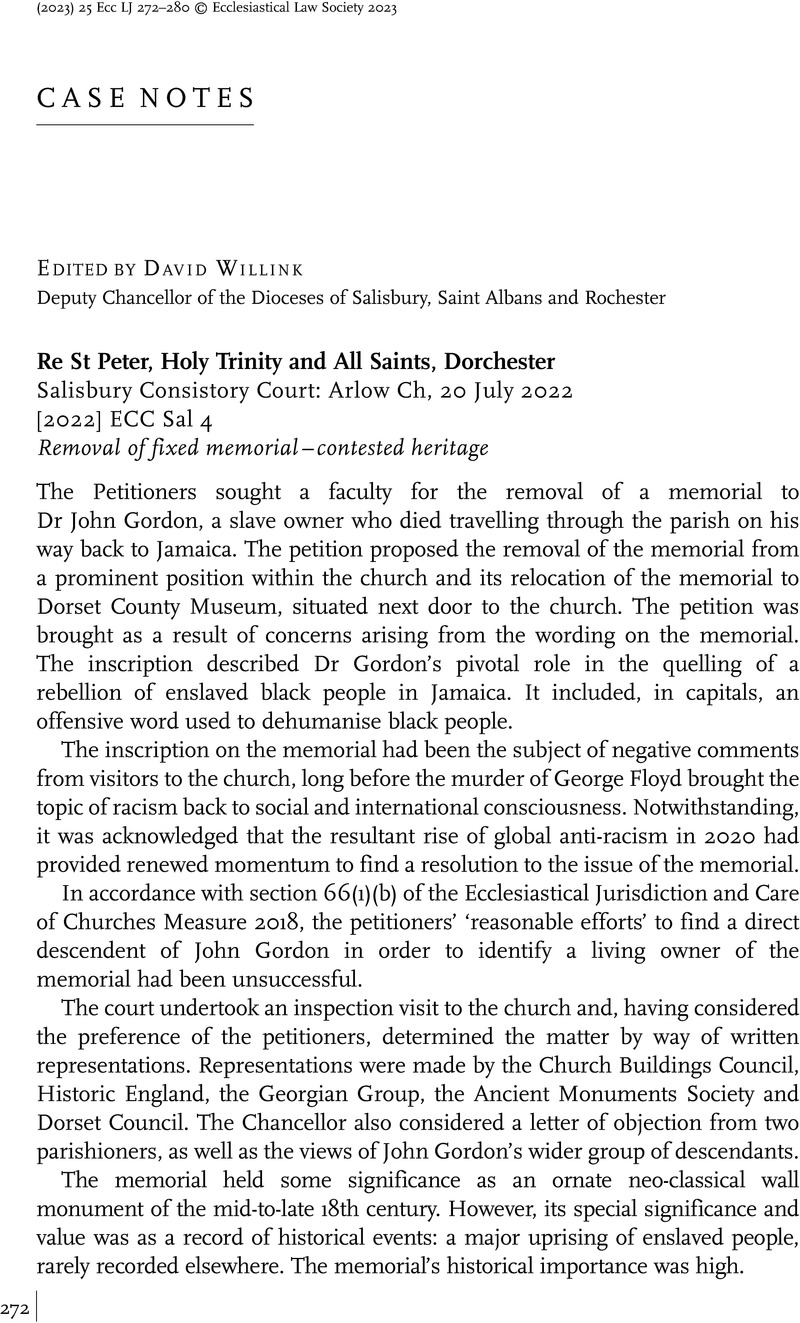No CrossRef data available.
Article contents
Re St Peter, Holy Trinity and All Saints, Dorchester
Salisbury Consistory Court: Arlow Ch, 20 July 2022 [2022] ECC Sal 4 Removal of fixed memorial – contested heritage
Published online by Cambridge University Press: 28 April 2023
Abstract
An abstract is not available for this content so a preview has been provided. Please use the Get access link above for information on how to access this content.

- Type
- Case Notes
- Information
- Copyright
- Copyright © Ecclesiastical Law Society 2023



